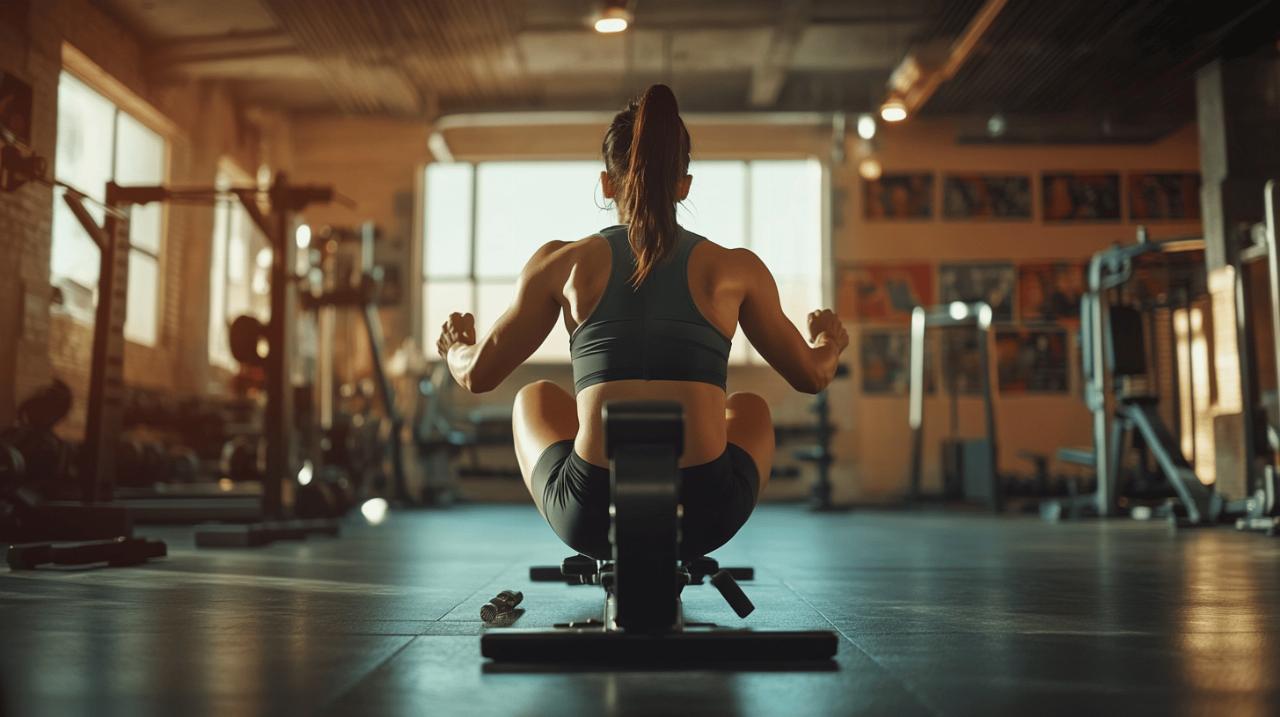Embarking on a weight loss journey requires more than just dedication to your workouts; it demands that your equipment remains in prime condition to support your goals. A rowing machine stands as a brilliant tool for shedding pounds and tackling stubborn belly fat, offering a full-body workout that engages the vast majority of your muscles whilst burning a substantial number of calories. However, the longevity and effectiveness of your rowing machine hinge on proper maintenance. Neglecting these essential care routines can diminish performance, reduce calorie-burning efficiency, and ultimately derail your fitness progress. By understanding how to keep your rowing machine in excellent working order, you ensure that every stroke contributes meaningfully to your goal of long-term belly fat reduction and overall health improvement.
Keeping Your Rowing Machine in Top Form: Daily and Weekly Care
Maintaining your rowing machine does not require hours of effort, yet the small rituals you adopt after each session can make a significant difference over time. Establishing a routine of daily and weekly care ensures that your machine remains reliable, smooth, and ready to deliver the high-quality workout you need to achieve your weight loss goals. Whether you row at moderate intensity or push through high-intensity interval training sessions, these habits will preserve the integrity of your equipment and maximise the calories you burn during every workout.
Quick post-workout cleaning habits
After finishing your rowing session, taking a few moments to wipe down your machine can prevent the accumulation of sweat, dust, and grime that might otherwise compromise its function. Perspiration can corrode metal components and damage sensitive parts over time, so using a damp cloth to clean the seat, handle, and rail is a simple yet effective practice. Pay particular attention to the chain or resistance mechanism, as these areas are most susceptible to wear and tear. A quick wipe-down not only keeps your machine looking pristine but also reduces the risk of sticky residue that could affect the smoothness of your strokes. This small effort directly contributes to maintaining the machine's performance, ensuring that your calorie-burning potential remains undiminished session after session.
Weekly inspection routines for peak performance
Beyond the daily cleaning ritual, dedicating time each week to a more thorough inspection can help you identify minor issues before they escalate into costly repairs or performance problems. Check the seat rollers and rail for any signs of dirt or debris that might impede smooth movement, and ensure that all bolts and screws remain securely fastened. Loose components can lead to unusual noises or instability, both of which can distract you from your workout and reduce the intensity you are able to maintain. Inspect the footrests and straps for wear, as these elements are crucial for maintaining proper rowing technique during the catch, drive, finish, and recovery phases. A weekly review of these details ensures that your machine remains a reliable partner in your journey toward shedding belly fat and improving overall cardiovascular health.
Deep maintenance for maximum calorie-burning efficiency
Whilst daily and weekly care keeps your rowing machine in good working order, deeper maintenance tasks are essential for sustaining maximum calorie-burning efficiency over the long term. These activities, performed on a monthly or quarterly basis, address the internal mechanisms and components that are not always visible but are critical to the machine's performance. By committing to a schedule of thorough upkeep, you protect your investment and ensure that your rowing machine continues to support your fitness goals, whether you are aiming for moderate-intensity sessions or pushing through demanding high-intensity interval training routines.
Monthly lubrication and chain checks
One of the most important aspects of deep maintenance involves lubricating the chain or other moving parts that drive the resistance mechanism. Depending on the type of rowing machine you own, whether it features flywheel, hydraulic, or magnetic resistance, the specific lubrication requirements may vary. For machines with a chain, applying a small amount of appropriate lubricant each month reduces friction and noise whilst preserving the smoothness of each stroke. This practice not only enhances the quality of your workout but also prevents premature wear that could otherwise compromise your ability to maintain a consistent stroke rate and intensity. A well-lubricated chain allows you to focus on engaging your core muscles and maintaining proper posture, both of which are essential for maximising the calories you burn and targeting overall body fat reduction.
Quarterly professional servicing considerations
Whilst many maintenance tasks can be performed at home with minimal tools and expertise, scheduling professional servicing every three months can provide peace of mind and extend the lifespan of your rowing machine. A qualified technician can inspect internal components, adjust tension settings, and identify potential issues that might not be apparent during routine home checks. This professional attention is particularly valuable if you row frequently or use your machine for high-intensity interval training, as these demanding workouts place greater stress on the equipment. By investing in quarterly servicing, you ensure that your rowing machine remains capable of delivering the full-body workout that burns between four hundred and eight hundred calories per hour, supporting your goal of reducing visceral and subcutaneous fat over time. This proactive approach also reduces the likelihood of unexpected breakdowns that could interrupt your fitness journey and derail your progress.
Troubleshooting common issues that affect your weight loss goals
 Even with diligent maintenance, rowing machines can occasionally develop issues that impact their performance and, by extension, your ability to achieve your weight loss goals. Recognising and addressing these problems promptly is essential to maintaining the consistency required for long-term belly fat reduction. Whether you notice changes in resistance, unusual noises, or drops in overall performance, understanding how to troubleshoot these issues can save you time and frustration whilst ensuring that your workouts remain effective.
Even with diligent maintenance, rowing machines can occasionally develop issues that impact their performance and, by extension, your ability to achieve your weight loss goals. Recognising and addressing these problems promptly is essential to maintaining the consistency required for long-term belly fat reduction. Whether you notice changes in resistance, unusual noises, or drops in overall performance, understanding how to troubleshoot these issues can save you time and frustration whilst ensuring that your workouts remain effective.
Identifying and fixing resistance problems
Resistance is a fundamental aspect of rowing, as it determines the intensity of your workout and the number of calories you burn during each session. If you notice that the resistance feels inconsistent or unexpectedly easy, it may indicate a problem with the flywheel, magnetic resistance system, or hydraulic mechanism. For machines with adjustable resistance settings, ensure that the controls are functioning correctly and that no cables or connections have come loose. In some cases, a simple adjustment or recalibration can restore the machine to its optimal state. Addressing resistance problems promptly is crucial because maintaining a moderate to high intensity during your workouts is key to maximising calorie burn and promoting fat loss. Without the proper resistance, you may struggle to reach the sixty to seventy per cent of your maximum heart rate that is recommended for effective aerobic exercise and overall fat reduction.
Addressing unusual noises and performance drops
Unusual noises during your rowing sessions can be more than just an annoyance; they often signal underlying mechanical issues that could worsen over time. Squeaking, grinding, or rattling sounds may indicate that the chain needs lubrication, the seat rollers require cleaning, or a component has become loose or misaligned. Similarly, if you notice a sudden drop in the smoothness or fluidity of your strokes, it may suggest that the rail or other moving parts have accumulated debris or sustained damage. Investigating and resolving these issues quickly helps maintain the quality of your workouts, ensuring that you can continue to engage eighty-five per cent of your muscles with each stroke. A smooth and quiet rowing machine allows you to concentrate on your technique and intensity, both of which are essential for achieving the consistent calorie deficit needed to shed belly fat and improve your overall health.
Extending equipment lifespan to support your fitness journey
Your rowing machine represents a significant investment in your health and fitness, and taking steps to extend its lifespan ensures that it remains a valuable asset throughout your weight loss journey. By considering factors such as proper storage, environmental conditions, and the timely replacement of worn parts, you can maximise the return on your investment and continue to enjoy the benefits of a full-body workout that supports your goals of reducing belly fat and improving cardiovascular health.
Proper storage and environmental considerations
Where and how you store your rowing machine can have a profound impact on its longevity and performance. Ideally, the machine should be kept in a dry, climate-controlled environment to prevent rust, corrosion, and damage to electronic components. Excessive humidity or temperature fluctuations can degrade materials over time, affecting everything from the chain to the resistance mechanism. If space permits, covering your rowing machine when not in use can protect it from dust and accidental damage. For those who store their equipment in a garage or shed, consider using a dehumidifier or ensuring adequate ventilation to minimise moisture exposure. Proper storage not only preserves the machine's functionality but also ensures that it remains safe and comfortable to use, allowing you to maintain the consistency required for achieving your fitness goals and supporting your journey toward long-term belly fat reduction.
When to Replace Parts Versus Buying a New Machine
As your rowing machine ages, you may find yourself facing the decision of whether to replace worn parts or invest in a new machine altogether. In many cases, replacing components such as the seat, footrests, or resistance mechanism can be a cost-effective way to restore performance and extend the machine's useful life. However, if multiple parts are failing or the machine is no longer providing the smooth and reliable workout you need, it may be time to consider purchasing a new model. Factors to consider include the frequency of your workouts, the intensity of your training, and the cost of repairs relative to the price of a new machine. A well-maintained rowing machine can support your fitness journey for many years, but recognising when it is time to upgrade ensures that you continue to have access to the high-quality equipment necessary for burning calories, building lean muscle, and achieving your weight loss goals. By making informed decisions about maintenance and replacement, you can ensure that your rowing machine remains a steadfast ally in your pursuit of a healthier, fitter you.




